#Polyorchis
Explore tagged Tumblr posts
Video
Polyorchis karafutoensis by Alexander Semenov
#Polyorchis#karafutoensis#hydrozoa#Hydrozoan#hydromedusae#jellyfish#sakhalin#the Sea of Okhotsk#underwater#underwaterphoto#wideangle#wide#flickr
4 notes
·
View notes
Text
Polyorchis penicillatus, a medusa de olhos vermelhos, é uma hidromedusa comum ao longo da costa oeste. A água-viva come anfípodes caprelídeos e outros pequenos crustáceos que são comuns em algas marinhas, bem como vermes e crustáceos do fundo e pequenos plânctons.
#animal#animais#animals#biologia#biology#invertebrates#invertebrados#medusa#agua viva#jellyfish#animais marinhos#marine life#polyorchis penicillatus
7 notes
·
View notes
Text


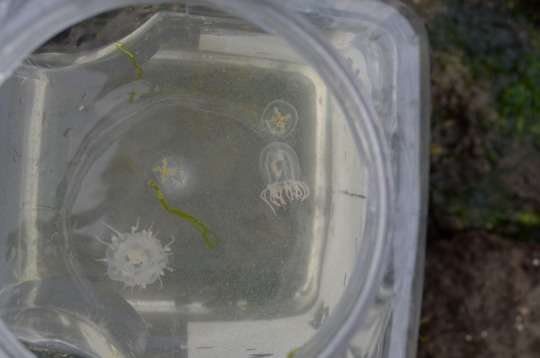

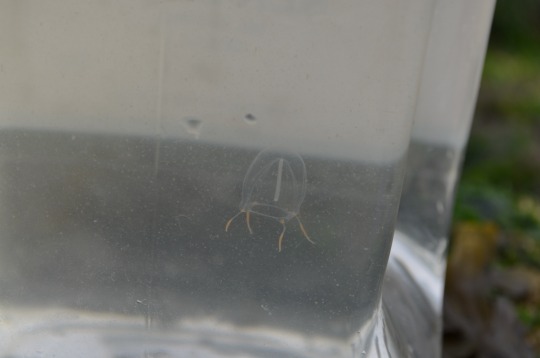


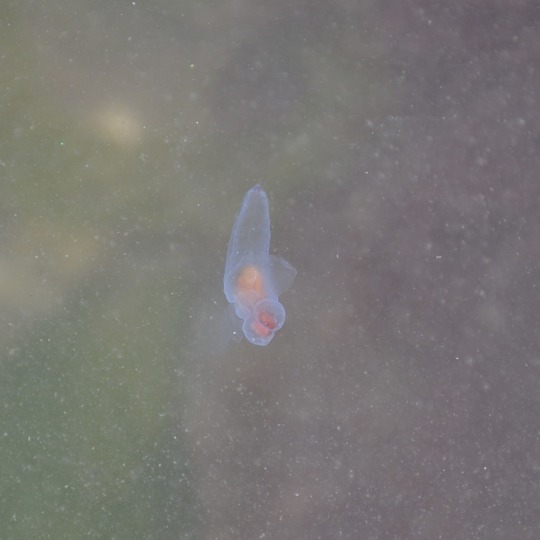


Found some photos I thought I had lost! These are from over ten years ago when I was in Newport and was able to visit the ocean more often. I technically still live near the sea but chronic illness has made it difficult to get the energy to see my invertebuddies since the beach isn’t easily accessible without a car. I do miss my nature walks a lot.
Friends include various (mostly unidentified) jellies, s ctenophores, bladderwrack, and the largest sea lemon nudibranch I had ever seen.
The jellyfish with the red eyes is Polyorchis penicillatus! Folks in iNaturalist seem to think the big beached Schyphozoa is a fried egg jelly and not a Lion’s Mane like I thought. The others I haven’t been able to get identified.
Clione (a sea angel, a swimming gastropod) is also here! Definitely not something I expected to find in the shallows of a bay. I’m guessing most of this stuff was swept up by the tide from deeper more open waters.
26 notes
·
View notes
Text
@tomnookishot i was on a hiatus for 2 weeks but since u requested jellyfish posting
Ummm


Here are two jellies I briefly did a search on. Not much is said about them in Wikipedia, but they’re both members of the family Corynidae (Meaning “club”, as in the kinda thing that you bludgeon people’s faces in with- which is a pretty metal name imo.)
Anyways, the one on the left is known as the Red-Eyed Medusa (Polyorchis penicillatus), and has a lovely entry on the Aquarium of the Pacific’s website. I’m particularly fond of its bright red ocelli, it’s not unheard of in the Hydrozoan world, but it’s definitely distinguishing.
The one on the right is known as the Hair Jellyfish in Japanese (Spirocodon saltatrix, which is much easier to remember). It’s pretty much everywhere in Japanese jellyfish infoblogs, but I think its hair-like tentacles are tasty looking.
My favourite thing about this family in general though, is how the insides are always so big and prominent. It reminds me of the inside of a pomelo, tbh.
#tbh my mind has been a bit too clear lately so i haven’t been thinking about much of anything for a while#i think this is healthy though#jellyfish#mun rambles#tomnookishot#sorry for not posting or being online much I’m mostly living my life rn haha#that is to say not doing anything
14 notes
·
View notes
Text
A jellyfish might not be what you think of when it comes to Alaskan wildlife, but spotting this little red-eyed Medusa jellyfish was one of the highlights of my time on the pacific coast. There’s something so mesmerizing about the way these animals move in the water and I feel like their gracefulness is highly underrated!
The red ocelli (eyespots) that you can see around the base of the bell are light sensitive, which allows the jelly to orient itself. It feeds on benthic zooplankton, small crustaceans, and worms. Isn’t it adorable how this little one boops the surface of the water with their bell?
#jellyfish#red-eyed Medusa jellyfish#animals#cute#biology#wildlife#zoology#nature#Alaska#invertebrates#jellies#polyorchis#cool#video#happy#animal behavior
323 notes
·
View notes
Photo


Red Eyed Jellyfish- Polyorchis pencillatus
Salt Creek, August 2019
#jellyfish#scuba#red eyed jellyfish#polyorchis pencillatus#polyorchis#jellies#scuba photography#underwater photography#salt creek#august 2019#pnw#pnw scuba diving#scuba diving#scuba divers of tumblr#marine invertebrates#marine bio#marine biology#photography#nature photography#animals#mine#jellyfish photography#jellyfish art#salt creek washington#port angeles#diving#washington scuba diving#marine biologist#marine life#washington marine life
366 notes
·
View notes
Photo

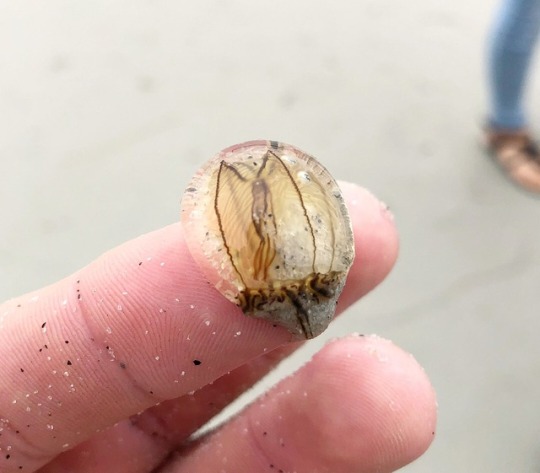

A choir of bell jellies!!
Based on the reaction from yesterday’s beachcombing Instagram Story, we went back to Asilomar State Beach to share our findings with Periscope and Facebook Live.
After spending some time with various algae and moon jellies, we ventured down the beach only to find that Polyorchis bell jellies were also making their way around the Monterey Peninsula!
Bell jellies are different from moon jellies—they’re a hydrozoan medusa, not a scyphozoan medusa. They’re crystal clear with filamentous guts and gonads, and with conspicuous red eyespots along the eye of their bell, earning them the name “red eye medusa.”
You never know what you’ll find on the beach!
789 notes
·
View notes
Photo
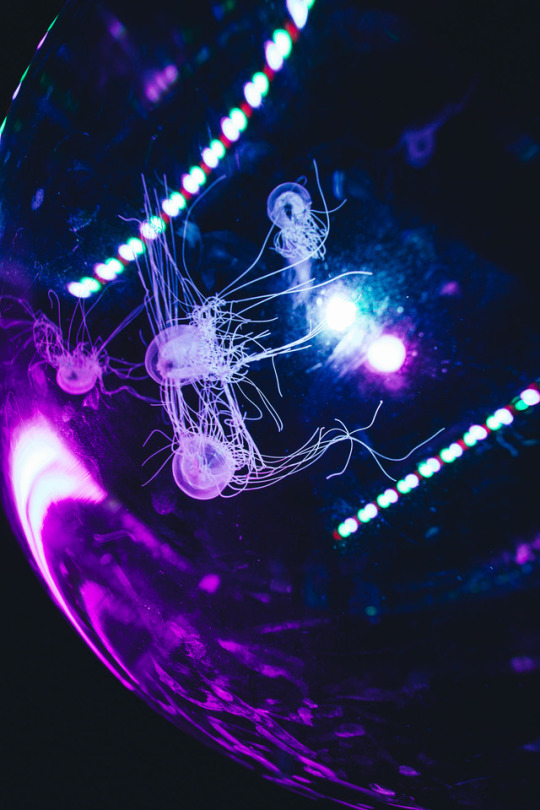
9 notes
·
View notes
Text

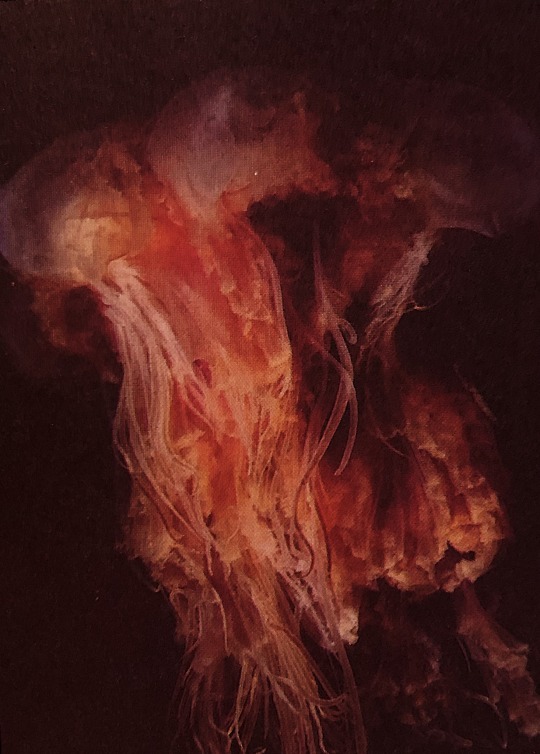
Left: Bell Medusa, ‘polyorchis penicilliatus’ Medusa stage of an unknown attached polyp
Right: Giant Jellyfish, Cyanea Capillata, A North American Atlantic species of Cyaena.
They can reach a diameter exceeding 2m, known as the ‘sea-blubber’ of the sea
Hickman, Jr., Cleveland P., Larry S. Roberts, and Frances M. Hickman. 1982. ‘Biology of Animals’. 3rd ed.
St. Louis, Missouri: C. V. Mosby Company Ltd.
#signal boost#marine biodiversity#marine biology#entomology#isopods#sea life#deep sea#jellyfish#ecology#fishblr#biologyblr#evolutionarybiology#natural history#paleoblr#endangered species#photography#biology#scientific illustration#sea creatures#evolution#freshwater#evolutionary theory#seashells#malacology#natural science#oceancore#ocean conservation
196 notes
·
View notes
Text

Red-eye jellyfish | Polyorchis penicillatus
X
259 notes
·
View notes
Photo

Polyorchis penicillatus
#polyorchis penicillatus#animals#jellyfish#vintage#old#nature#beauty#my#photography#medusa#sea animals#ocean#marine species
11 notes
·
View notes
Photo
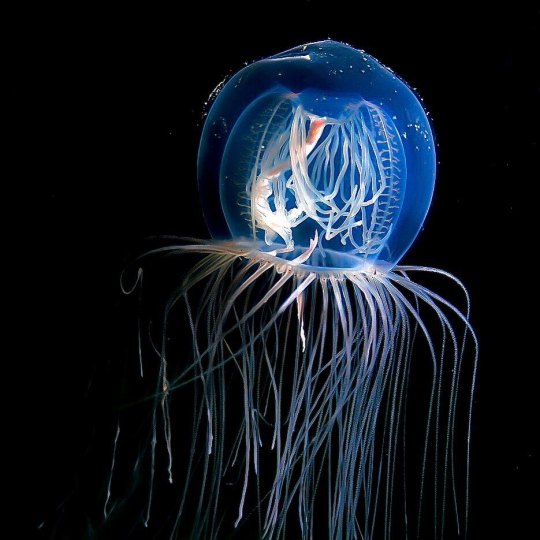
Emergence from the dark side..
red eyed medusa jellyfish (Polyorchis pencillatus).
by Laura Tesler
15 notes
·
View notes
Photo
A hydromedusa (looks like Polyorchis sp.) with a crab larva riding on top and some amphipods hanging out inside. The red dots at the base of the tentacles are eyes!

594 notes
·
View notes
Photo

「キタカミクラゲ -Polyorchis Karafutoensis-」 Canon EOS70D SIGMA 17-50mm f2.8 EX DC OS HSM f/3.2 1/30s ISO160 -1.7step 17mm 2017/07/25 茨城県東茨城郡大洗町 アクアワールド大洗水族館
6 notes
·
View notes
Text
The bell of the bay! Remember the Polyorchis bell jellies we...
http://dlvr.it/QgntfH
0 notes
Photo
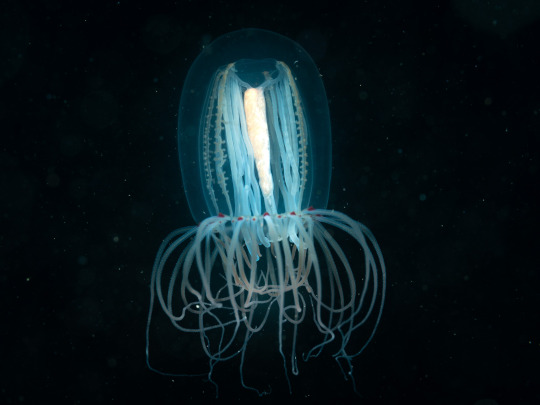
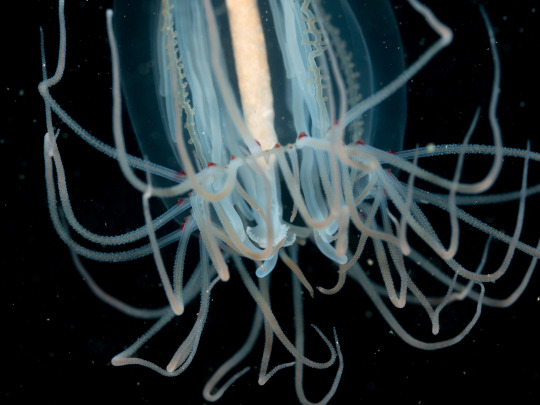
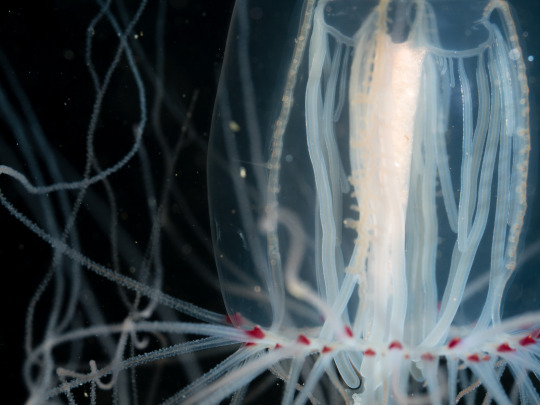
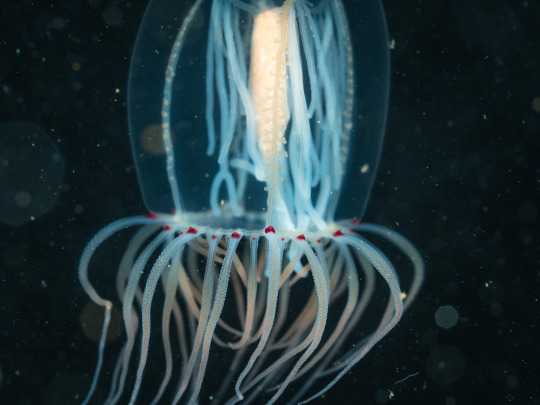


If you've gotta catch a red-eye, make it a Polyorchis penicillatus bell jelly!
Lining the rim of its crystal-clear bell are a myriad of red eye-spots that help the jelly sense light and dark. A large smack of bell jellies—with their sights set on Monterey beaches—gave local diver Phil Lemley an eyeful this weekend!
#monterey bay aquarium#red eye medusa#polyorchis penicillatus#go to sleep bell jelly you can't burning the candle on both ends!#red eye of sea-uron#huge on red it
905 notes
·
View notes